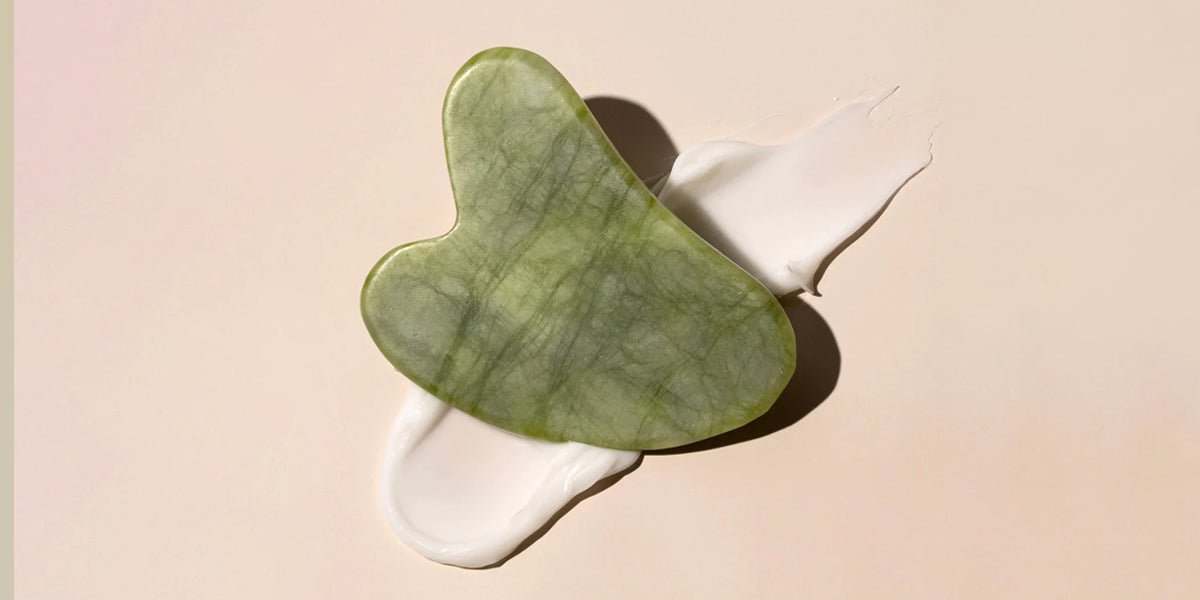
Lymphatic Drainage: The Chill Way to a Sculpted Face
|
|
4 min
|
|
4 min
You’ve probably seen it all over social media—gua sha tools gliding across faces, jade rollers rolling along jawlines, and influencers talking about “de-puffing” rituals. Behind all the buzz is a technique with a real foundation in wellness: lymphatic drainage. But what exactly is it, and does it really give you that coveted sculpted look? Let’s dive into the science, the benefits, and how you can bring this chill ritual into your daily routine.
The lymphatic system is part of your body’s immune network. It acts like a drainage system, clearing away excess fluid, toxins, and waste products from tissues. Think of it as a natural detox highway, with lymph fluid flowing through vessels and lymph nodes that filter and clean it.
When the lymphatic system is sluggish or congested, you may notice puffiness, dull skin, or even more frequent breakouts. Stimulating it through massage helps improve circulation, reduces swelling, and promotes a healthier complexion.
Lymphatic drainage is a gentle, rhythmic massage technique designed to encourage the flow of lymph fluid. Unlike deep tissue massage, it uses light pressure and sweeping motions that direct fluid toward lymph nodes where it can be processed.
Facial lymphatic drainage specifically targets puffiness in areas like the under-eyes, cheeks, and jawline. It can be performed by professionals in a spa or clinic, or practiced at home using tools like gua sha stones, jade rollers, or even just your hands.
By stimulating the lymphatic system, this massage reduces fluid buildup that causes morning puffiness, especially around the eyes.
Encouraging lymph flow helps define the jawline and cheekbones by reducing bloating in the face.
Improved circulation delivers oxygen and nutrients to the skin, leaving you with a refreshed glow.
By supporting lymphatic movement, the massage helps flush out toxins and reduce congestion, which may help minimize breakouts.
The gentle pressure promotes calmness, making it a stress-relieving ritual as much as a beauty one.
Feature |
Lymphatic Drainage |
Traditional Facial Massage |
|---|---|---|
Pressure used |
Gentle, light, sweeping motions |
Medium to firm, kneading and lifting |
Primary focus |
Lymph flow, de-puffing, detoxification |
Relaxation, muscle relief, circulation |
Visible effects |
Reduced puffiness, more defined contours |
Softer skin, muscle relaxation |
Tools often used |
Gua sha, jade rollers, manual strokes |
Hands, facial oils, sometimes machines |
Best for |
Swelling, dullness, tired-looking skin |
Tension, stress, improving circulation |
Both have benefits, but lymphatic drainage is uniquely designed to help with puffiness and sculpting.
Start with clean skin and apply a facial oil or serum to create glide.
Always start with gentle downward strokes along the neck to open lymph pathways. This makes it easier for fluid from the face
Use upward and outward motions with your fingers or a gua sha tool, guiding fluid toward the lymph nodes near your ears.
With very light pressure, sweep from the inner corner of your under-eye outward to reduce puffiness.
Glide from the center of your forehead outward and down toward the temples.
Consistency matters. Even a few minutes daily can make a difference.
Professional Treatments
These are usually more intensive and may include specialized techniques or machines that stimulate lymphatic flow. They are ideal for a deeper detox or if you want faster results before an event.
At-Home Practices
Perfect for daily upkeep, at-home methods are budget-friendly and easy to incorporate into your skincare routine. With tools like gua sha or jade rollers, you can create a spa-like experience from the comfort of your bathroom.
Lymphatic drainage is generally safe for most people. It’s particularly beneficial if you struggle with puffiness, dullness, or skin that looks tired. However, if you have medical conditions affecting the lymphatic or circulatory system, it’s best to consult with a doctor before trying.
Stay hydrated to help your lymphatic system flush effectively
Eat antioxidant-rich foods like berries and leafy greens to reduce inflammation
Sleep with your head elevated to prevent fluid buildup overnight
Be consistent; occasional treatments work, but regular practice shows the best results
Pair it with skincare; antioxidants and hydrating serums enhance the effects of massage
Lymphatic drainage isn’t just a beauty trend—it’s a wellness practice with real benefits. By stimulating the body’s natural detox system, it can reduce puffiness, sculpt facial contours, brighten the complexion, and leave you feeling more relaxed. While it won’t permanently change your face shape, it’s a powerful tool for achieving a healthier, fresher look without invasive treatments. Whether you book a professional session or master a quick at-home ritual, lymphatic drainage is a chill yet effective way to keep your skin looking its best.
For at-home routines, 3 to 5 times a week is ideal. Professional treatments may be scheduled once or twice a month, depending on your goals.

